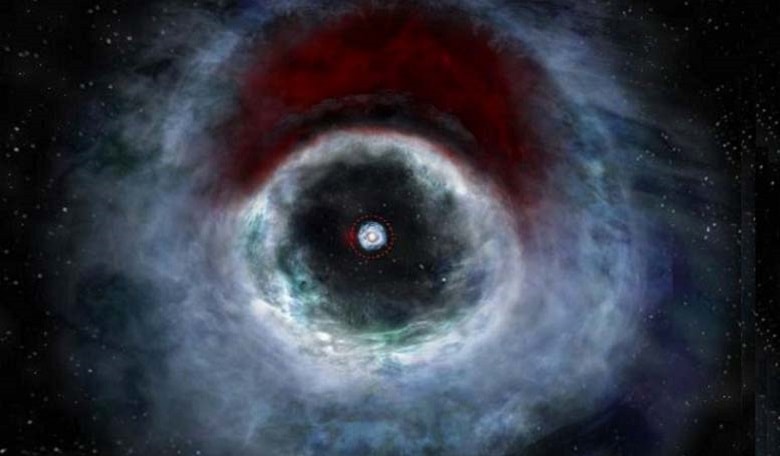With a new, detailed look at images taken with the Atacama Large Millimeter/submillimeter Array (ALMA), astronomers provide fresh insights into how planets might evolve within a binary star system. Presenting their results at the recent AAAS meeting in Washington, D.C a team from Rice University in Houston, Texas, showed analysis of a planet-forming disk around HD 142527, a binary star about 450 light-years from Earth in a cluster of young stars known as the Scorpius- Centaurus Association. Embedded in the outer reaches of the protoplanetary disk, the researchers discovered a striking crescent-shape region of dust that is conspicuously devoid of gas.
"This binary system has long been known to harbour a planet-forming corona of dust and gas," said Andrea Isella, an assistant professor of physics and astronomy at Rice University. "The new ALMA images reveal previously unseen details about the physical processes that regulate the formation of planets around this and perhaps many other binary systems."
Just how planets form in binary star systems due to the the gravitational tug-of-war between two stellar bodies has long perplexed researchers. Early theories suggested that young planets would possibly be ejected from the system or sent crashing into their host stars due to unstable orbits imposed upon them by their binary host stars. However, recent observational evidence contradicts this assumption and images taken of HD 142527 now add further weight to successful planet building in these turbulent environments.
The HD 142527 system consists of a main star twice the mass of our Sun and a smaller companion star only about a third the mass of our Sun. They are separated by approximately one billion miles: a little more than the distance from the Sun to Saturn. The disk of HD 142527 begins incredibly far from the central star – about 50 times the Sun-Earth distance. Most of the disk consists of gases, including isotopologues of carbon monoxide (different forms of carbon monoxide, in this case 13CO and C180), but a huge arc around nearly a third of the star system consists of dust and ice but is noticeable lacking in gas.
"Where the red in the image is brightest, the density of the dust peaks," he said. "And where we find a dense clump of dust, the carbon monoxide molecules disappear." The team suspect that this is due to the gases freezing out and forming a thin layer of ice on the dust grains. "The temperature is so low that the gas turns into ice and sticks to the grains," said Isella. "This is important for planet formation. The solid dust needs to stick together to form a bigger body that will eventually attract more rock and gas gravitationally. If you try to smash rocks together, they don't stick together very well," continued Isella. "If you smash snowballs together, they do. So when you form an ice mantle around the grains, you increase their capability to stick together."
These colliding snowballs will then grow big enough to form planetesimals and eventually combine to build even bigger objects. The team speculate that this crescent-shaped dust cloud may be the result of gravitational forces unique to binary stars and may also be the key to the formation of planets. With the high capability of radio telescopes such as ALMA to see beyond objects that are normally obscured by gas and dust and therefore blocked from view in visible light, Isella expects many new revelations in this area of research in the near future. "We've been looking at these objects for at least 20 years," said Isella. "There are between a few hundred and a few thousand they can look at again with ALMA. They are starting with the brightest ones, because they are the easiest to observe.” But the beauty of the Atacama array said Isella is that “every time you get new data, it's like opening a Christmas present. You don't know what's inside."











